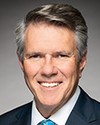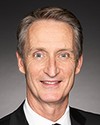Questions are being raised about the small modular reactors and enriched uranium. This isn't CANDU waste. This is a different kind of waste.
I come from northern Ontario. We live with rock. Rock moves. Water moves. I don't know, maybe Yvonne Jones wants it....
You send your people to our area all the time, looking for a place to dump it, because it's a serious issue. The CANDU reactors have a technology, but this is different. You haven't addressed the fact that we're talking about enriched uranium, and there are serious questions about it.
Am I supposed to go home and tell people in northern Ontario, “Hey, you know? It's all been overblown. You can fit it into a hockey arena. You can eat it”? That's not a plan.



